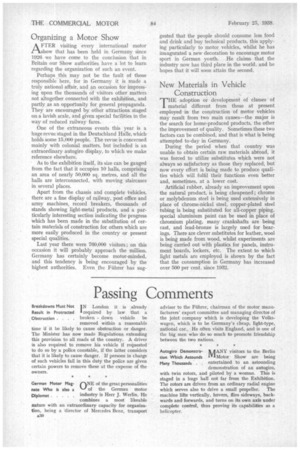New Materials in Vehicle Construction
Page 32

If you've noticed an error in this article please click here to report it so we can fix it.
THE adoption or development of classes of material different from those at present employed in the construction of motor vehicles may result from two main causes—the major is the' search for home-produced products, the other the improvement of quality. Sometimes these two factors can be combined, and that is what is being attempted to-day in Germany.
During the period when that country was unable to obtain certain raw materials abroad, it was forced to utilize substitutes which were not always so satisfactory as those they replaced, but now every effort is being made to produce qualities which will fulfil their functions even better and, sometimes, at a lower cost.
Artificial rubber, already an improvement upon the natural product, is being cheapened ; chrome or molybdenum steel is being used extensively in place of chrome-nickel steel, copper-plated steel tubing is being substituted for all-copper piping, special aluminium paint can be used in place of chromium plating, many crankshafts are being cast, and lead-bronze is largely used for bearings. There are clever substitutes for leather, wool is being made from wood, whilst experiments are being carried out with plastics for panels, instrument boards, lockers, etc. The extent to which light metals are employed is shown by the fact that the consumption in Germany has increased over 500 per cent. since 1932.
































































































